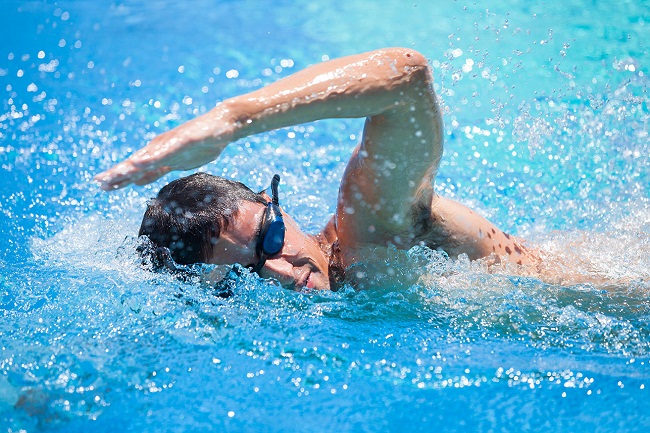Cardiovascular fitness is necessary for everyone; the young, the old, the fit and unfit ones, and even those in rehab as it’s one of the best forms of exercises to pump oxygen and blood more efficiently. It produces endorphins making you feel ‘so good’ after each session.
Swimming is the best physical activity for those with diabetes –whether type 1 or type 2, especially for those suffering from numbness or the lack of feeling in their feet caused from diabetic neuropathy.
It strengthens your body’s major muscles which help in controlling diabetes as your muscle cells absorb blood sugar efficiently and that’s how any physical exercise and swimming for diabetes helps to lower blood sugar levels, effectively.
Not only swimming helps you tone your body, it burns about 350-500 calories per hour, lowers your blood pressure and cholesterol, and in the course of becoming fit, it also helps to control your diabetes effortlessly.
Benefits of swimming in diabetes
- Swimming regularly, or as advised by the diabetes doctor maintains a better control over ones blood sugar levels
- The lack of gravity in water makes it easier and less stressful for people with diabetes preventing them from physical injuries to their feet or joints
- It burns a lot of calories in 40 minutes to an hour’s session and for those who find exercise stressful or painful, swimming is the best form of losing weight and getting fit
- Swimming is the best for your cardiovascular health. It keeps your heart strong and in good health
- As an enjoyable physical activity, individually or in a group session, swimming benefits your mental health
Things to keep in mind before swimming – if you have diabetes!
- Inform the lifeguard that you have diabetes before every session. That is, before getting yourself in the pool
- Always wear your diabetes ID bracelet whether or not in pool
- Wear your shower sandals around the pool and also in the locker rooms. This will reduce the chance of cutting or bruising your feet or getting an athlete’s foot. Also make sure you examine your feet closely after swimming to check for bruises, cuts or abrasions
- Monitor your blood sugar levels at a regular interval as swimming in diabetes, for a continuous period of time, may reflect on low blood sugar or hypoglycemia due to tiredness
- Keep your glucose meter handy and your glucose pills, snacks provided by your doctor to use when your experience a drop in your blood sugar
- For those who use an insulin pump, consult your health care provider before beginning your swimming program as it requires dedicated management while swimming, for those with diabetes who are dependent on insulin
Now get into the pool and go after your goals of losing depression, stress, weight and manage your diabetes well.
